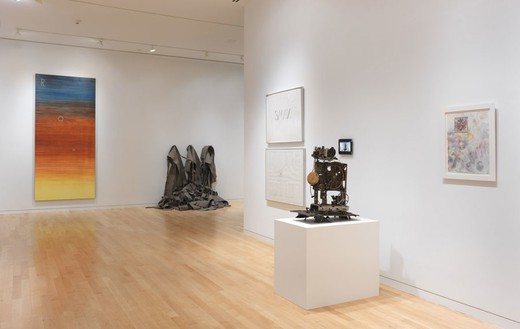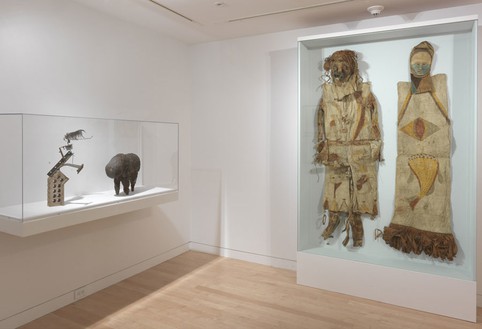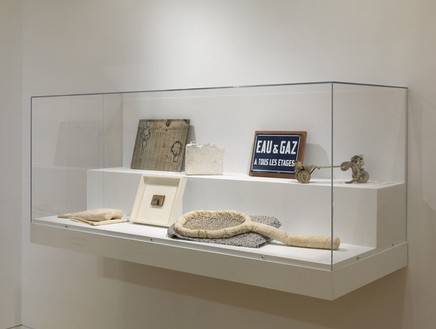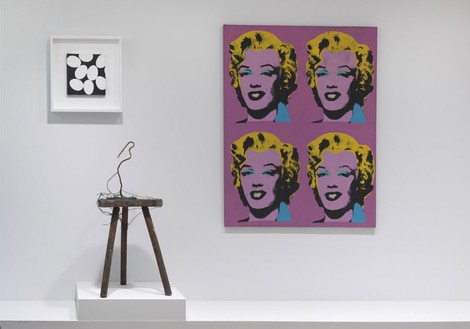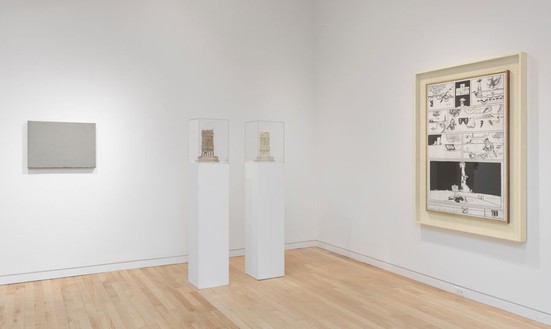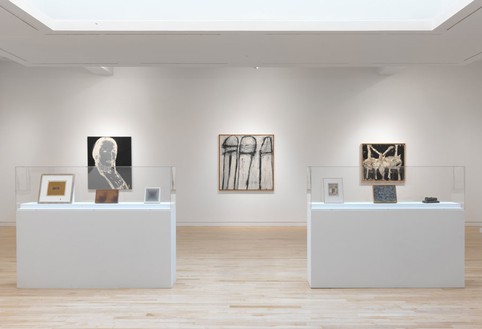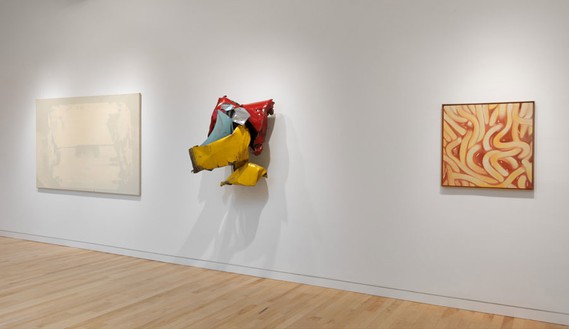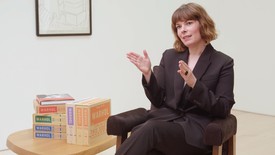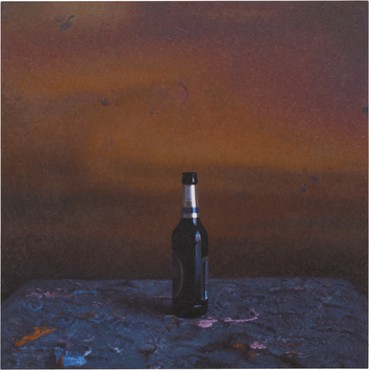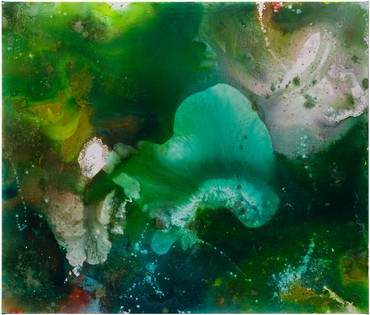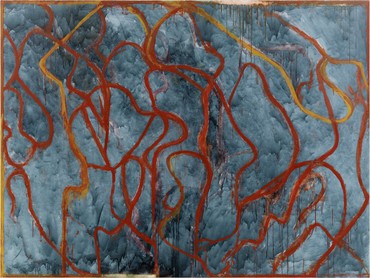About
Gagosian Gallery, in collaboration with the Robert Rauschenberg Foundation, is proud to present “The Private Collection of Robert Rauschenberg,” selections from Rauschenberg's personal art collection. This is the first time that Rauschenberg’s collection has been publicly presented and that an artist’s collection has been exhibited at the gallery. It follows the acclaimed introductory survey exhibition of Rauschenberg’s own work presented at Gagosian West 21st Street in 2010. Proceeds from the collection help fund the endowment established for the Foundation’s philanthropic activities.
An artist’s collection is a rare resource, charged with anecdotes of how and why and where works were acquired, as well as whether they represented epistemic interests, or they were used for reference in the creation of new works. This fascinating exhibition provides special insight into Rauschenberg’s broader inspirations as well as his friendships and affinities, the causes he supported, and his personal philanthropic initiatives.
A game-changing figure in post-war American art, Rauschenberg bridged all traditional boundaries between medium and genre and forever changed the relationship between artist, image, and viewer. He quickly identified as his driving energies and motivations the incidental, the immediate, and the perception of a presence greater than his own artistic virtuosity. Rauschenberg truly believed in the communicative and transformative potential of art and throughout his life he devoted his creative energies equally to artistic and philanthropic activities. In 1970 he founded Change, Inc. to assist artists financially in emergency situations, and in the 1980s he inaugurated ROCI (Rauschenberg Overseas Culture Interchange), a pattern-breaking, collaborative, global exhibition project that forged entirely new artistic territory in international dialogue and peace-keeping. In 1990 he formed the Robert Rauschenberg Foundation to benefit and promote awareness of the causes and groups close to his heart. Activities included educational art programs, environmental and humanitarian campaigns, as well as grants and direct assistance to artistic collaborations. Since Rauschenberg’s death in 2008, the Foundation is responsible for maintaining this legacy as well as the expansion of philanthropic activities consistent with his personal view that “Art can change the world.”
In addition to his philanthropic spirit and his championing of positive change, Rauschenberg was also acknowledged to be one of the most generous and inquisitive artists of his time, passionately engaged in, and supportive of, the art of others. Over a lifetime, he acquired through exchanges, gifts, and purchases, an astonishingly rich collection of artworks by seminal forbears (Joseph Beuys, Marcel Duchamp, René Magritte, Edweard Muybridge); a wide circle of friends, including choreographers and composers (Trisha Brown, John Cage, John Chamberlain, Merce Cunningham, Oyvind Fahlstrom, Willem de Kooning, Jasper Johns, Roy Lichtenstein, Claes Oldenburg, James Rosenquist, Karl Heinz Stockhausen, Jean Tinguely, Cy Twombly, Andy Warhol, Susan Weil); and younger colleagues (David Byrne, Robert Mapplethorpe, Brice Marden, Bruce Nauman, Ed Ruscha).
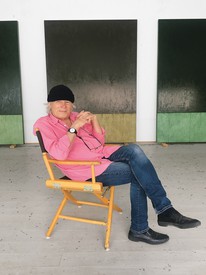
Brice Marden
Larry Gagosian celebrates the unmatched life and legacy of Brice Marden.
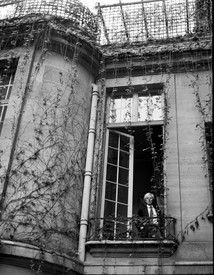
In Conversation
Christopher Makos and Jessica Beck
Andy Warhol’s Insiders at the Gagosian Shop in London’s historic Burlington Arcade is a group exhibition and shop takeover that feature works by Warhol and portraits of the artist by friends and collaborators including photographers Ronnie Cutrone, Michael Halsband, Christopher Makos, and Billy Name. To celebrate the occasion, Makos met with Gagosian director Jessica Beck to speak about his friendship with Warhol and the joy of the unexpected.
Andy Warhol: Silver Screen
In this video, Jessica Beck, director at Gagosian, Beverly Hills, sits down to discuss the three early paintings by Andy Warhol from 1963 featured in the exhibition Andy Warhol: Silver Screen, at Gagosian in Paris.
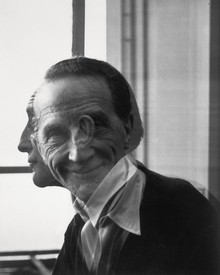
Still Life, Still
Harry Thorne reflects on Brian O’Doherty’s recording of Marcel Duchamp’s heart.
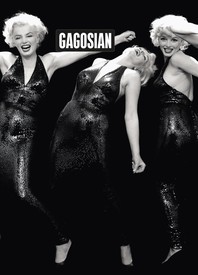
Now available
Gagosian Quarterly Summer 2023
The Summer 2023 issue of Gagosian Quarterly is now available, featuring Richard Avedon’s Marilyn Monroe, actor, New York, May 6, 1957 on its cover.
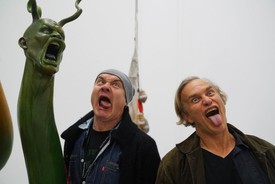
Truth Revealed: Damien Hirst and James Fox on Ashley Bickerton
In conversation with James Fox, Damien Hirst reflects on the artwork of his longtime friend.
